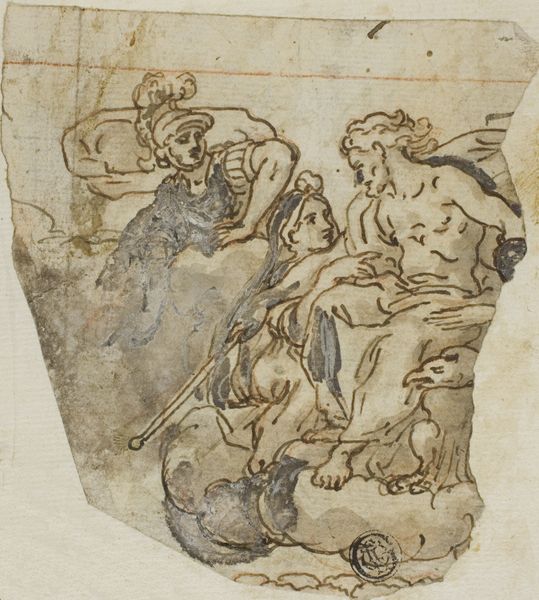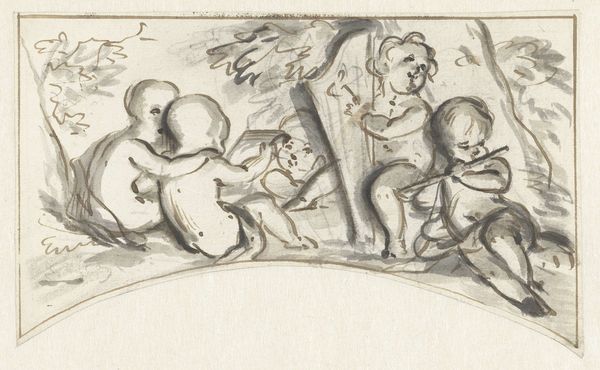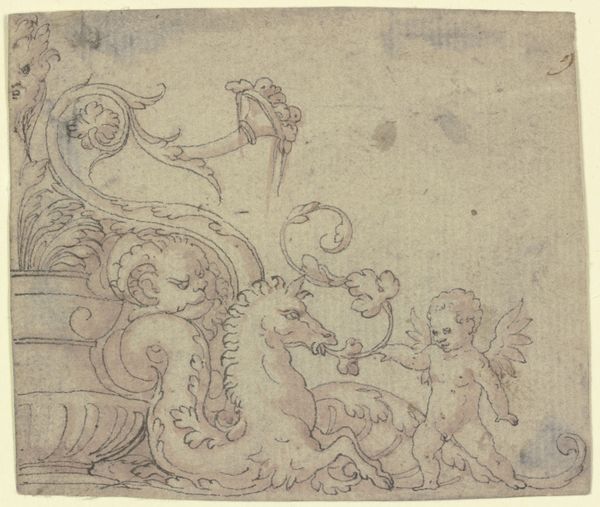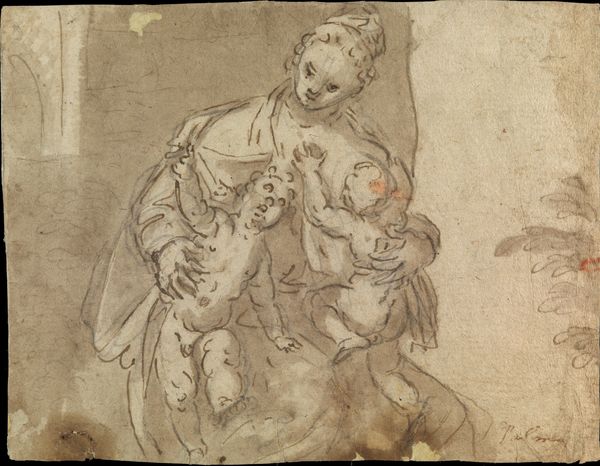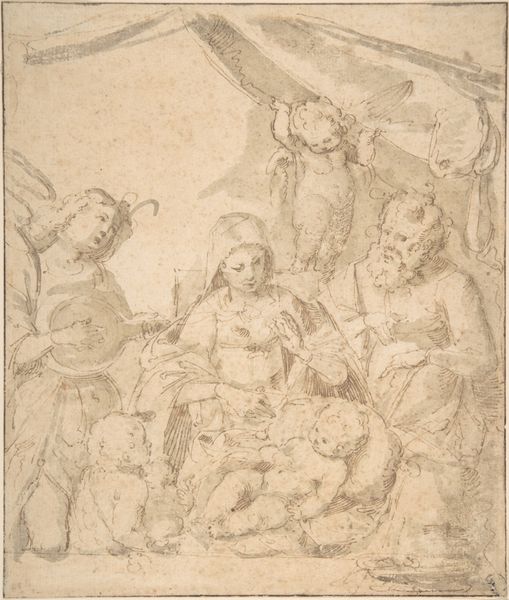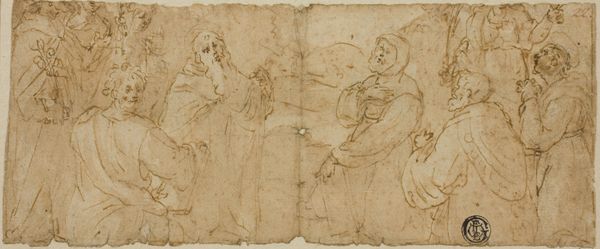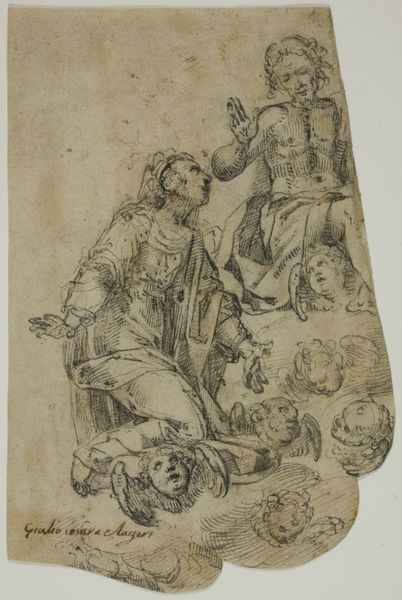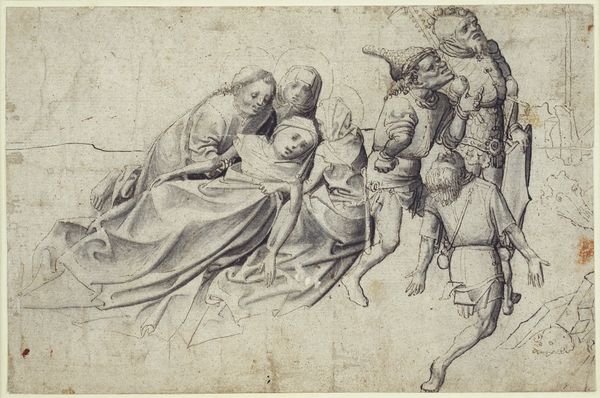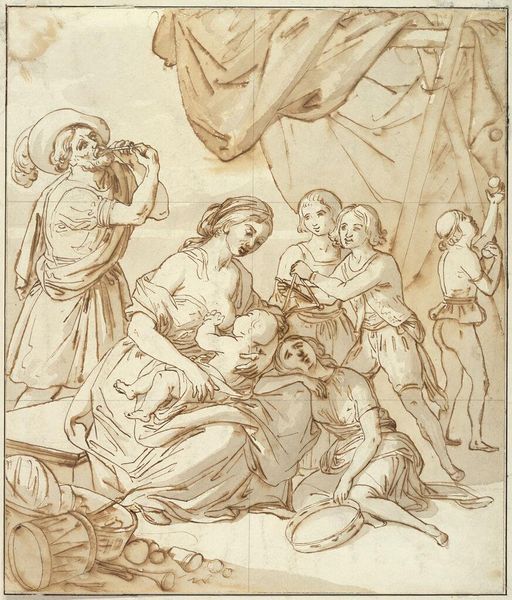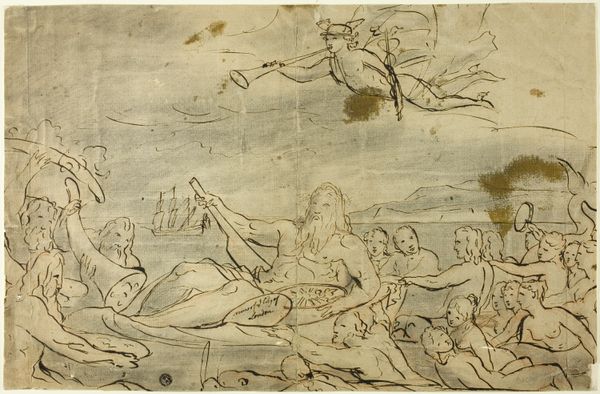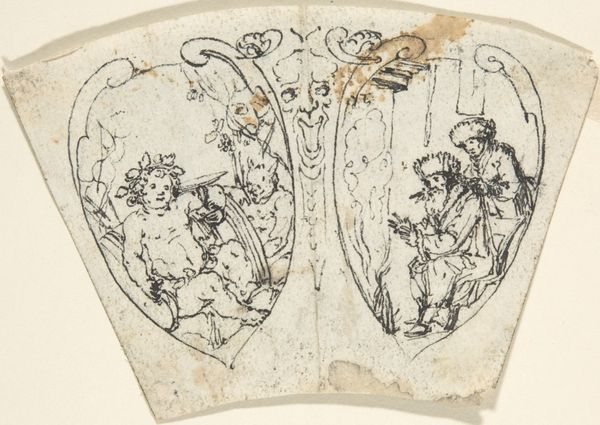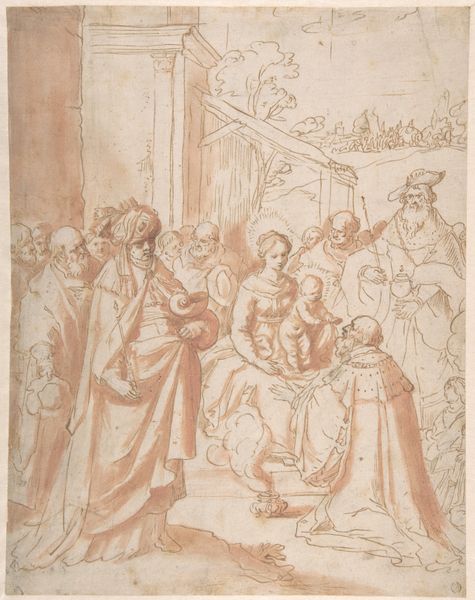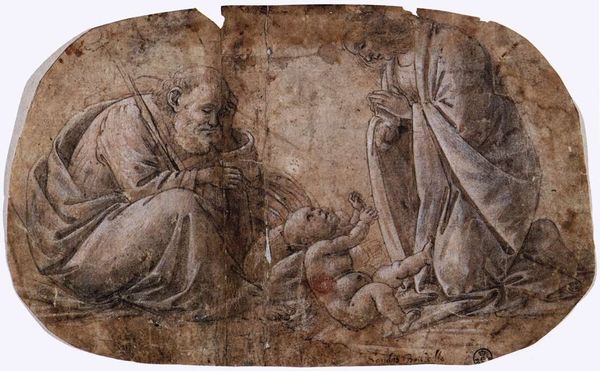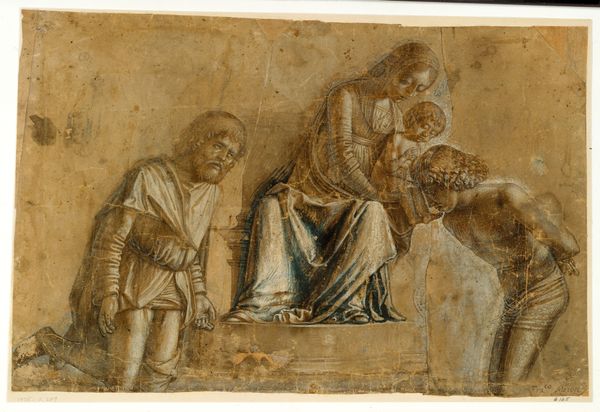
drawing, print, paper, ink, chalk, black-chalk
#
drawing
#
narrative-art
# print
#
figuration
#
paper
#
11_renaissance
#
oil painting
#
ink
#
chalk
#
history-painting
#
italian-renaissance
#
black-chalk
Dimensions: 99 × 160 mm
Copyright: Public Domain
Editor: We're looking at Giovanni Battista Paggi's "Monk Giving Last Communion," made sometime between 1575 and 1585. It's an ink, black chalk, and white chalk drawing on paper. The oval composition is quite striking, giving the scene a feeling of intimacy. How do you interpret this work in the context of its time? Curator: This piece gives us an important glimpse into the intersection of religious practice, social structure, and artistic expression during the late Renaissance. The act of giving last communion was a significant ritual, laden with social and spiritual meaning. Consider the power dynamics inherent in this scene: a male cleric performing a sacrament central to salvation on, presumably, a dying person. How might the recipient’s class, gender, or even race shape our reading of this moment? Editor: That’s fascinating. I hadn’t thought about how social status might influence the scene. Curator: The Renaissance was not a monolithic experience; gender and race were being actively constructed through religion. Even within the church, there are differences depending on geographical placement and specific orders. Who were the witnesses, and what do their expressions convey? Are they mourners, members of a confraternity, or figures representative of the heavenly host? How do the specific choices of the artist—the starkness of the medium, the close cropping, and the oval shape—influence the meaning of the scene? Editor: The close cropping and raw medium do make the scene feel more immediate, more human and less divine, despite the apparent presence of angels. Curator: Precisely. The image complicates a straightforward religious interpretation, encouraging us to question the established social order. What does a scene like this say about a commitment to social change? The format could make it personal, for devotion perhaps, rather than communal like a public painting. What do you think about that reading? Editor: I appreciate how this analysis encourages us to see beyond the surface and consider the deeper socio-political implications. Thanks for providing this framework! Curator: Absolutely. Examining the convergence of religion, society, and art can provide valuable insights into marginalized communities and promote a more equitable and just future.
Comments
No comments
Be the first to comment and join the conversation on the ultimate creative platform.
